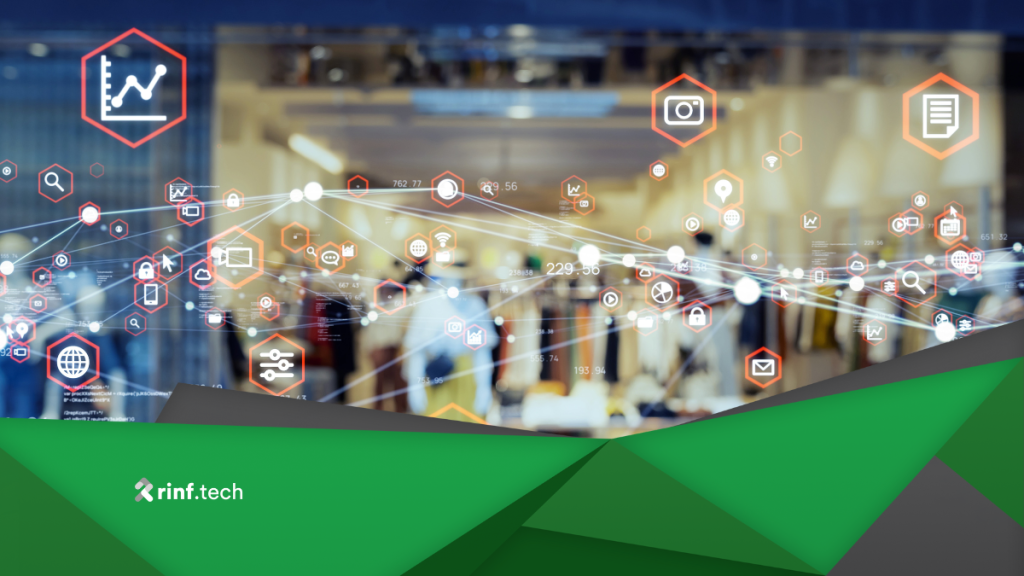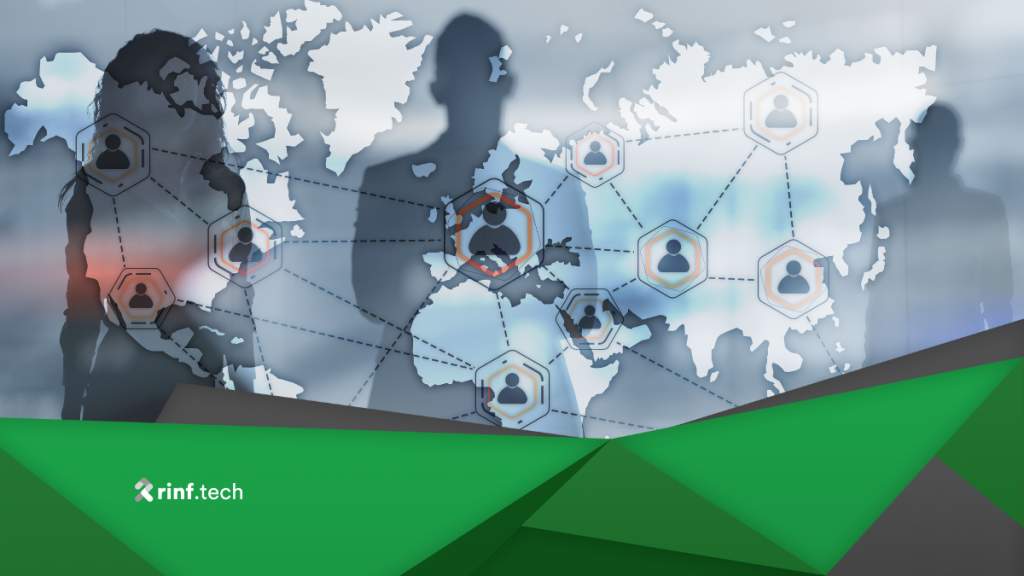
How FinTech Companies Benefit From IT Outsourcing
This article discusses benefits of IT outsourcing for fintech organizations, with focus on cost-savings, innovation, and cybersecurity.
Numerous modern businesses may need to explore untapped markets, develop products and services beyond their areas of expertise, save costs, and tap into the resource banks of other organizations without security or compliance compromises. These enterprises may have previously had to choose between captive and outsourced operations. However, a growing list of new needs necessitates a different approach that hybridizes insourcing and outsourcing: a build-operate-transfer (BOT) model.
This article anatomizes the three critical phases of a BOT model, highlights its advantages and disadvantages, and identifies key factors for BOT success.
The BOT model is a business approach that involves an enterprise outsourcing a project to a third-party partner organization for a specific period of time. This model is bound by a “build operate transfer agreement” that states that the third-party company will complete a comprehensive project lifecycle before handing back ownership to the commissioning organization.
Build-Operate-Transfer in IT outsourcing is a prominent and high-potential use case. BOT has numerous advantages, including strengthening public-private partnerships, reducing public expenses on infrastructure, ensuring that a project is developed by specialists, making meaningful inroads in foreign customer bases, and sidestepping geopolitical, cultural, and bureaucratic complexities of new markets. It can also boost transparency, security, flexibility, and compliance.
The most significant benefit of BOT models is that they pave the path to sustainable ventures. This is crucial because companies often struggle to make a long-term impact in today’s highly competitive and volatile market conditions.
The first phase of a build-operate-transfer model is the build phase. This phase involves scoping the project, framing timelines, formalizing a BOT agreement with a partner organization, securing finances, budgeting resources, commissioning subcontractors and other teams and personnel, and identifying compliance requirements.
The success of the build phase depends on a few key components and strategies. Below are the top 3 ways to ensure a successful build phase in BOT models.
Project feasibility assessments are a critical first step in BOT models. BOT can be a transformative solution for enterprises, but its success depends on meticulous project planning. This includes accurately and efficiently framing goals, KPIs, technical specifications, safety and security protocols, project requirements, and designing a roadmap for phases 2 and 3. Every aspect of the project needs to be examined and deemed feasible by a panel of key stakeholders and experts.
Top BOT models ensure that both the commissioning and commissioned organization bring the best of their resources to the project. It’s crucial to optimize resource allocation in the build phase. This includes deciding what resources to provide the partner organization, what to ask of them, and what new resources, assets, infrastructure, and personnel might be needed to complete the project. Infrastructure development is vital to the build phase because it’s the foundation upon which the project is launched.
All businesses must abide by a stringent set of region- and industry-specific rules and regulations. Examples of compliance frameworks that organizations need to follow include ISO, GDPR, CCPA, HIPAA, and FedRAMP. Companies that launch BOT models in foreign countries must examine and ensure compliance with local and foreign laws and regulations. Collaboration with a third-party partner will also result in an exchange of sensitive information and data, all of which need to be protected. Addressing regulatory and legal complexities in the build phase will ensure that the operate and transfer phase is secure.
The second phase of a Build-Operate-Transfer model is the operate phase. In this phase, the third-party partner becomes the central protagonist of this phase, taking complete ownership of operations and using the project plans, infrastructure, objectives, and resources from the build phase.
According to Deloitte’s Global Outsourcing Survey 2022, 67% of executives confirm budget increases for operate services. The operate phase involves the implementation of production pipelines and lifecycles, personnel and asset management, product and service delivery, and continuous monitoring and reporting to evaluate performance.
The following are some critical elements to ensure streamlined day-to-day operations in the operate stage of a BOT model.
The optimization of human resources is integral because human skills are a rare commodity in most industries. According to the Manpower Group’s 2023 Global Talent Shortage report, 77% of employers struggle to find talent with relevant skills. IT and Data accounted for 27% of the most sought-after skills, and engineering followed at 22%. BOT models are themselves a way to tackle the global skills shortage, but human resource management is a critical responsibility even within these models. The third-party partner needs to ensure that the workforce is being leveraged effectively and responsibly during the operate phase.
The third-party partner operates like an autonomous enterprise in this phase, meaning financial and performance monitoring becomes a vital responsibility. The entire performance ecosystem needs to be evaluated in this phase. This includes tracking KPIs, ensuring the short- and medium-term ROIs on investments and initiatives, identifying vulnerabilities and areas for optimization, and leveraging performance-related data to enhance operations.
Companies use third-party partners in BOT models for various reasons, the most important of which is to ensure high product or service quality. Partner companies must ensure that quality control systems and practices are powerful. They must also ensure that known and unknown operational vulnerabilities and risks are efficiently identified, managed, and remediated.
Organizations have many new tools and technologies to leverage in a BOT model’s operate phase. Robust technologies don’t automatically lend themselves to powerful innovations and operational environments. Every technology is only as good as its application. Therefore, companies must strategically use tools and technologies in this phase to ensure maximum operational efficiency and performance.
The final phase of a build-operate-transfer model is the transfer phase. The partner company transfers back ownership of the project to the hiring enterprise in this phase. A suboptimal transfer phase can undo years of hard work and waste significant investments. A successful transfer phase can result in long-term financial gains, new opportunities, and significant competitive advantage.
The following are critical elements to ensure a smooth transfer from control from the partner company to the parent company.
The third-party organization needs to orient teams from the parent enterprise to the nuances of operational processes that are being transferred. This includes highly technical skills, auxiliary knowledge, rules and responsibilities, and strategic inputs. This information can be communicated through orientation seminars, training programs, documentation, consulting services, and short-term transition staff.
Financial handover is one of the most important junctures in the BOT lifecycle. Financial systems, practices, and paperwork need to be transferred with clarity and precision. Top-quality financial handover can mitigate numerous challenges in the transfer phase and beyond. Numerous legal complexities may arise during and after the handover process. These complexities need to be addressed at an early stage because enterprises shouldn’t get bogged down by the consequences of poor finance management, compliance failures, and legal issues.
Most businesses can’t afford extended downtime or disruptions due to post-transfer complexities. A minute of downtime can easily cost thousands of dollars. It’s essential that both the parent and partner company focus on ensuring business continuity post-transfer.
The following are the top 3 advantages of designing and implementing a BOT model for sustainable ventures.
One of the main reasons organizations hand over a project to a third party is that the partner company may be better equipped to handle various risks of the build and operate phase. The parent company, however, may have the capabilities to manage long-term post-transfer risks. Therefore, BOT models aren’t about completely handing off risk management to the partner company. It’s about ensuring that risk is being shared based on the capabilities and resources of both parties. BOT models also offer significant financial flexibility at every stage of a project lifecycle, which is something that traditional models often lacked.
Enterprises leverage a partner organization’s unique skillset and positioning to ensure that a project doesn’t face many roadblocks. Sidestepping these roadblocks and complexities results in accelerated project execution, quicker time-to-market, and enhanced scalability. Modern enterprises, especially in fields like IT, need to be able to rapidly grow their operations ad hoc. This makes build-operate transfer in IT outsourcing an alluring solution.
Onboarding employees, commissioning technology, and changing existing infrastructure for individual projects are expensive and can have long-term implications. BOT models can help enterprises tap into a partner company’s specialized area of expertise and tech stack to benefit their project without changing the fabric and fundamentals of their own organization.
The following are the top 3 disadvantages of a BOT model.
The operate phase can be a tricky period for the parent company because the partner is completely in charge of day-to-day operations. It can be unsettling for enterprises to not feel entirely in control of operational processes. This can be mitigated by having mechanisms to ensure visibility in the operate phase, ensuring clear communication and collaboration protocols throughout the process, and choosing a world-class and highly-reputed partner organization with a strong track record.
Build-operate-transfer agreements are blueprints for the rest of the model. Therefore, businesses must tackle potential challenges and misunderstandings at a contractual level. The BOT agreement must acknowledge roles, responsibilities, timelines, limitations, best interests, cost-sharing, compensation, and other key project details. Businesses may also face negotiation challenges, but these can be sidestepped by having a clear vision and strategy for the project and working with partner companies that have embarked on numerous BOT initiatives and have a clear understanding of its financial intricacies.
BOT models are ideal for enterprises that seek to implement projects in unexplored foreign markets and untapped customer bases. Some enterprises may choose foreign bases for projects to leverage local talent or cheaper infrastructure. These decisions come with many geopolitical challenges and region-specific regulations that enterprises may not be equipped to deal with. Partner organizations take on such challenges in a BOT model, which is why choosing partners with a strong presence, reputation, and relationships in multiple geographies is important.
The challenges mentioned above may seem daunting, but it’s important to remember that addressing these complexities can bring bountiful opportunities and significant profits. It can help companies become leaders in their industry as well as create a significant impact in other geographies and subsectors.
The first step to mitigating these challenges is to identify a list of critical success factors for BOT projects and use them as a guiding light through the course of the initiative. Enterprises also need to prioritize building strong and meaningful partnerships that go beyond superficial, short-term collaboration. They need to encourage open and effective communication regarding the project.
Enterprises should prioritize acquiring government support because it can provide a robust support system to launch BOT models. Government support could include funding, subsidies, and assistance to navigate and interpret various policies.
The best way to ensure success for a BOT model is to work with a world-class partner organization like rinf.tech.
BOT models can be a transformative solution for enterprises who need to tap into external resource and capability banks, save costs and enhance profits, enhance time-to-market, sidestep known and unknown challenges, and enter new markets and customer bases. The most significant benefits of a BOT model include risk sharing and financial flexibility, quicker project execution, and access to world-class and highly-specialized expertise and technology.
A series of challenges, including dependency on the partner organization, contractual complexities, and political uncertainties, can be mitigated by choosing a partner like rinf.tech. Many companies offer build-operate-transfer services but rinf.tech stands over the rest due to our extensive global presence, 550+ tech talents, world-class delivery models, and history of completing hundreds of successful projects for diverse clients.

This article discusses benefits of IT outsourcing for fintech organizations, with focus on cost-savings, innovation, and cybersecurity.

This article explores how retail companies can benefit from IT outsourcing in 2023, as they seek to integrate and implement retail innovation.

This guide is designed to provide you with the necessary knowledge and tools to make informed decisions and achieve successful outcomes in IT Outsourcing.
Copyright © 2023 rinf.tech. All Rights Reserved.
Terms & Conditions. Cookie Policy. Privacy Policy.
Politica Avertizari de Integritate (RO)